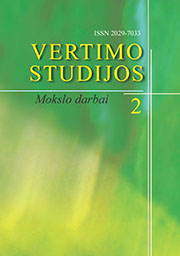TRANSLATION LANGUAGE: THE MAJOR FORCE IN SHAPING MODERN LATVIAN
TRANSLATION LANGUAGE: THE MAJOR FORCE IN SHAPING MODERN LATVIAN
Author(s): Andrejs VeisbergsSubject(s): Baltic Languages, Philology, Translation Studies
Published by: Vilniaus Universiteto Leidykla
Keywords: Translation; Modern Latvian;
Summary/Abstract: Cross-cultural communication affects not only the translations per se, but also target culture and thinking in general. Globalization, migration, tourism, student exchanges, international trade and business, and first of all the openness of media brings numerous new concepts and terms into languages. Yet, the direct lexical impact is only part of the process; there is also a broad effect on target language composition/corpus, conventions, norms and even deep structures. Most ‘original’ texts today carry many of the same traits as translations. Interference has long ceased to be characteristic of translated texts only. Translations in many languages constitute more than half of the texts that an average citizen ‘consumes’. We cannot speak anymore of a clear dichotomy of ‘translation language’ versus the real language – there is no isolation in the modern world. One can view this asymmetrical phenomenon as a deplorable interference, as linguistic and cultural imperialism or as a general standardization of languages with a consequent potential loss of cultural uniqueness. Yet it can hardly be affected, as language change is inevitable, and in the modern world translation functions as a major vehicle of change. It also calls for a review of some of the traditional approaches to translation theory issues within the framework of the new globalized, international and multilingual communication.
Journal: Vertimo studijos
- Issue Year: 2/2009
- Issue No: 2
- Page Range: 54-70
- Page Count: 17
- Language: English

